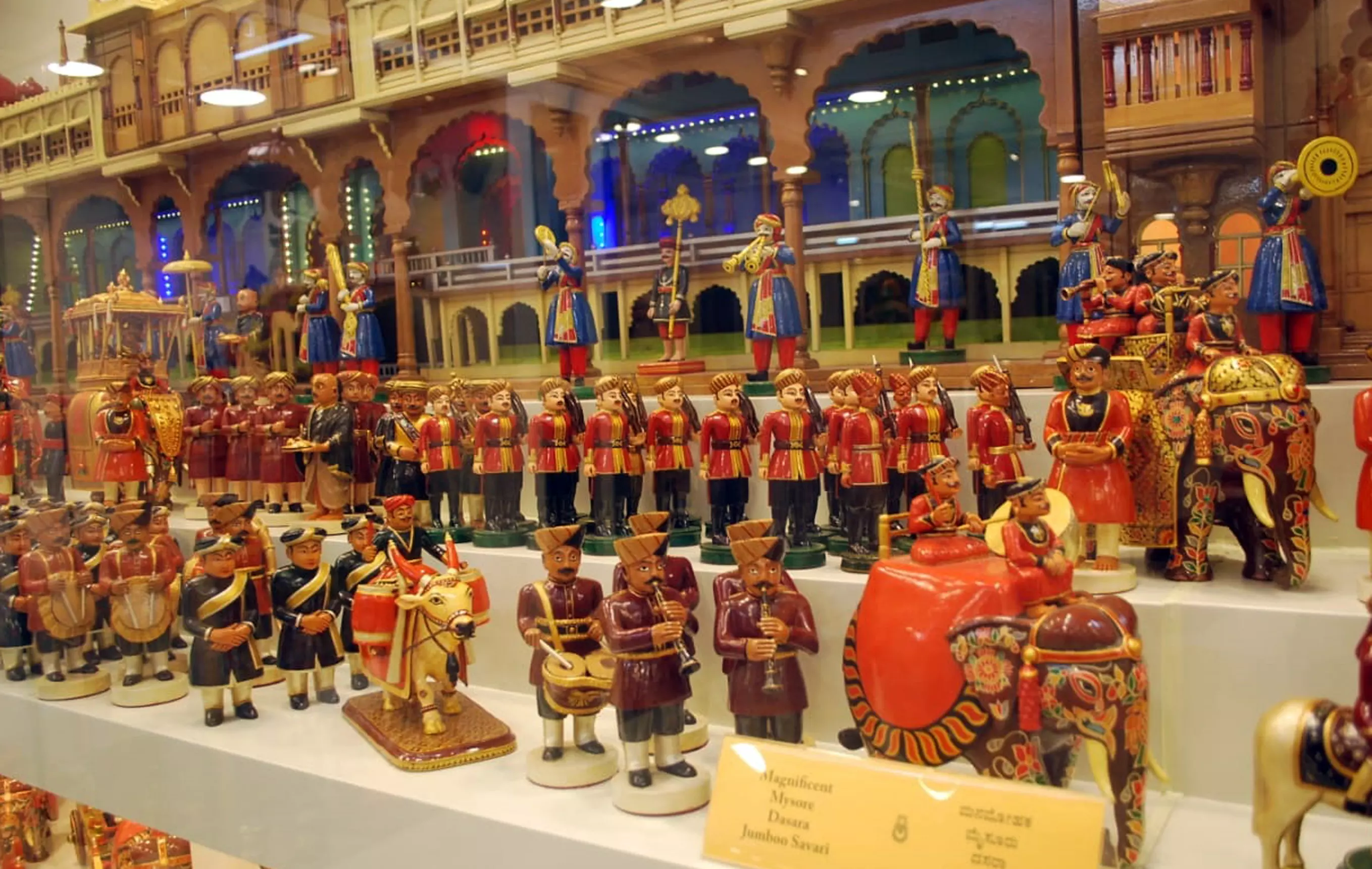
Kaladevi Dolls Museum: South India’s first dolls gallery opens in Mysuru
The collection at the Kaladevi Dolls Museum includes dolls commissioned from traditional artisans from India besides those designed at Ramsons Kala Pratishtana

Mysuru, the cultural capital of Karnataka, is now home to southern India’s first dolls museum, with more than 5,000 of them painstakingly collected from all over India.
The Kaladevi Dolls Museum will add to the attractions of Mysuru when it celebrates this year’s 10-day Dasara festival with gusto, attracting tens of thousands of people every year.
Until now, all the prominent dolls museums in the country were concentrated in the north and eastern regions, including Chandigarh, Delhi, Jaipur, and Kolkata.
The latest dolls museum has rightly opened in a region which is famous for carving dolls.
The collection at the Kaladevi Dolls Museum, which stands opposite the Chamarajendra Zoo, includes dolls specially commissioned from traditional artisans from across India besides those designed at the Ramsons Kala Pratishtana.
Indian dolls
Visitors will be able to see dolls from Channapatna and Kinhala in Karnataka, Kolhapur in Maharashtra, Cuddalore, Mayavaram, Thanjavur, Panrutti and Viluppuram in Tamil Nadu, Sri Kalahasti, Etikoppaka, Bobbili and Mondapalli in Andhra Pradesh, Varanasi, Lucknow and Sarnath in Uttar Pradesh, Kolkata and Krishnanagar in West Bengal, Puri, Bhubaneshwar and Raghurajpur in Odisha, Jaipur and Jodhpur in Rajasthan, Kasargod in Kerala, and Madhubani and Mithila in Bihar.
“This is the first dolls museum coming up in the south of the Vindhyas,” says Raghu Dharmendra, curator of the Mysuru museum and artistic adviser to Ramson Kala Pratisthana.
The museum’s piece de resistance, according to Raghu, is the 500-odd dolls diorama, which is a replica of the 1939 Dasara Jamboo Savari procession that happened in Mysuru and which has been immortalised in 26 oil on canvas panels in the Mysuru Palace.
The Kaladevi Dolls Museum was inaugurated by Rajamata of the Mysuru Royal family, Pramoda Devi Wadiyar, on September 27 to coincide with World Tourism Day.
What prompted the Ramsons Kala Pratishtana — engaged in identifying, promoting and supporting traditional crafts of India for five long decades — to establish the dolls museum? According to Raghu, it was the late R Kaladevi, who was an avid collector of dolls.
Visitors will be able to see dolls from Karnataka, Maharashtra, Tamil Nadu, Andhra Pradesh, Uttar Pradesh, West Bengal, Odisha, Rajasthan, Kerala, and Bihar at the museum
Collector’s passion
“Kaladevi collected miniatures from across the globe which she brought during her trips. Her collection includes miniature plastic dolls to miniature silver dolls and toys. She started collecting these in 1963, just after her marriage to D Ram Singh and coming to Mysuru,” Raghu told The Federal.
“Her passion for collecting dolls lasted till her demise in 2019. After that, her son RG Singh thought of establishing a dolls museum in in her memory. It was to open in 2020 but COVID-19 played spoilsport. Since a part of the collection of Kaladevi forms the core of the museum, it is named after her,” says Raghu.
Pratishtana has taken up many projects and conducted many programmes. Documenting, analysing, researching and identifying long-forgotten traditional board games of India is another ongoing project.
The research culminated in the project Kreedaa Koushalya (Sports Skill) and the exhibition of traditional board games. The annual calendar is another project, which has gained immense popularity.
The foundation encourages young traditional craftspersons with a Ramsons Kala Pratishtana Award cash prize of Rs 25,000 under the aegis of the Karnataka Shilpa Kala Academy every year.
Researching dolls
Raghu did a lot of research on dolls before embarking on the journey of setting up the Mysuru museum.
“India boasts of a rich tradition of dolls, right from the Indus Valley Civilisation. Excavation has unearthed numerous terracotta dolls and playthings,” he said. “The tradition of doll display at private homes is widespread in India. The traditions perhaps emanated from the availability of beautiful handcrafted dolls in an array of materials available locally and the abundance of talent in producing these,” he said.
Pratishtana has been organising an exhibition of traditional dolls of India — Bombe Mane — since 2005. This exhibition became popular over the years. Every year Bombe Mane had a special diorama section in which it displayed doll traditions from across the country with special themes and subjects.
“These dioramas were for one year and stored away to make way for new dioramas, such as stored dolls, which had to be brought out and displayed at some point. The very thought resulted in establishing the Doll Museum,” Raghu explains.
What will be the speciality of the 19th edition of Bombe Mane?
“This year has an even larger collection of dolls spread over four floors. Clay dolls from Tamil Nadu form a bulk of the collections. The Ganga clay dolls from West Bengal are a major attraction because of their compact size, exquisite detailing, and superior painting technique.
“There are also costume dolls from West Bengal's Murshidabad, finely crafted dolls, sporting a variety of textiles and jewellery styles from across the country.
“The highlight of this year’s special display is the annual Ratha Yatra of Lord Jagannatha, Balabhadra, and Subhadra held in Puri. Miniature replicas of the three massive chariots have been crafted by skilled craftsmen from Bhubaneshwar. There is also a diorama depicting the coronation of Shivaji to mark the 350th anniversary of his coronation,” Raghu said.

